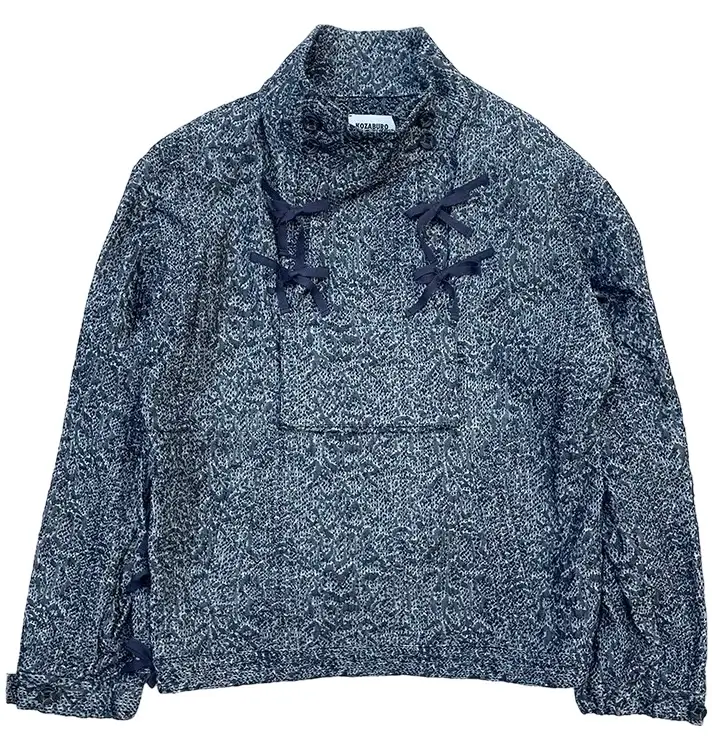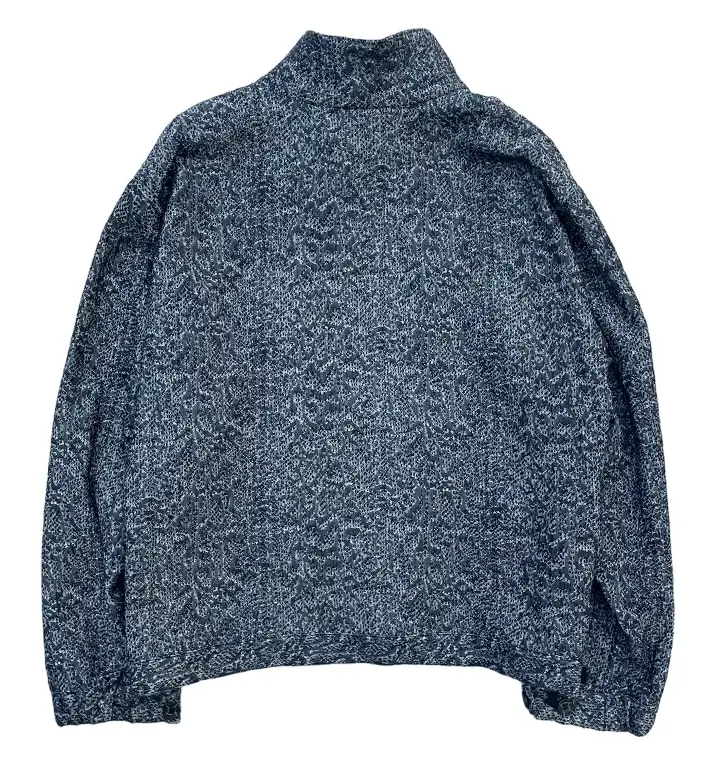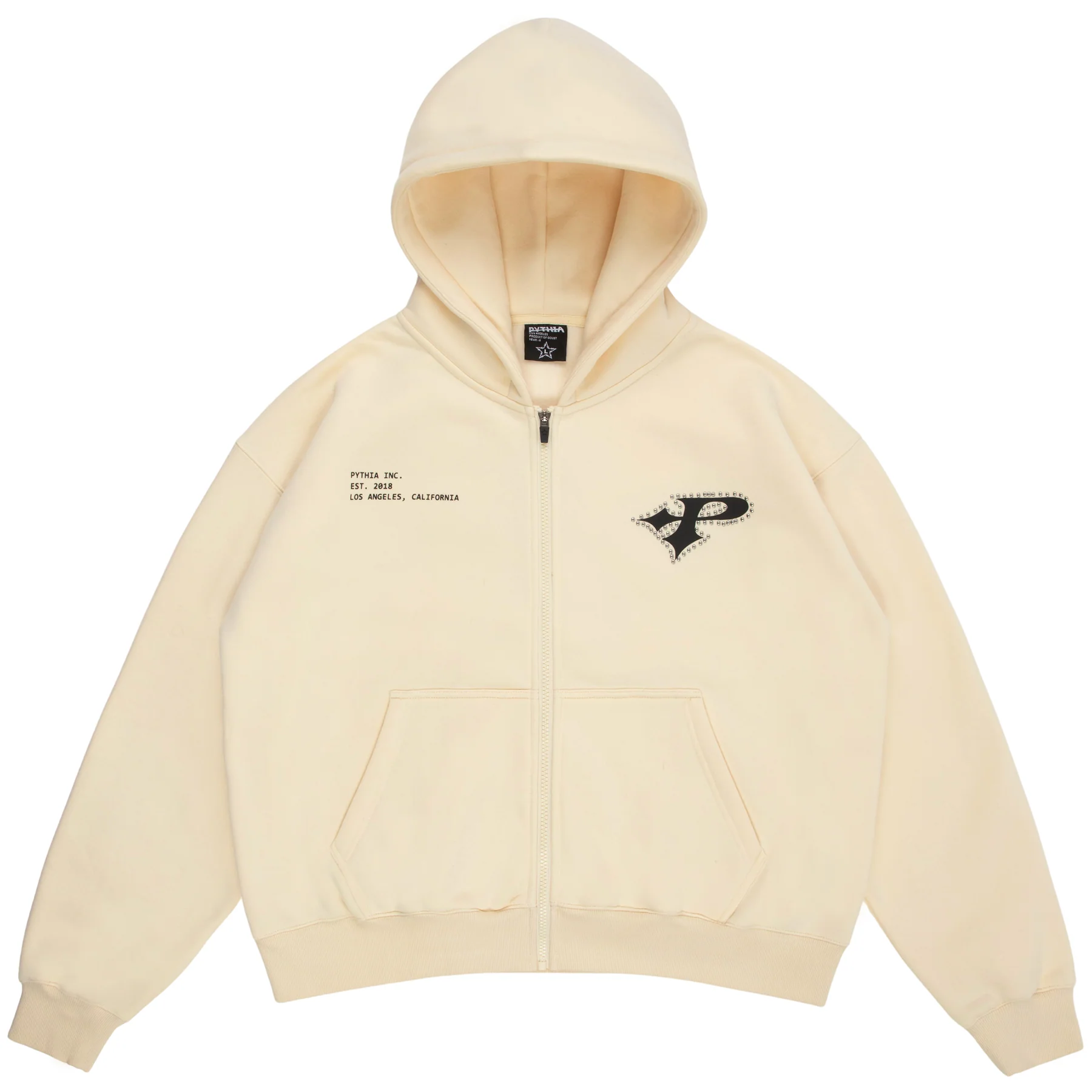In the evolving landscape of Japanese artisanal fashion, Kozaburo Akasaka’s designs sit at a rare intersection of tradition and rebellion. The Monk Jacket in Snake Sashiko, Navy Multi, exemplifies this ethos—where Eastern craftsmanship meets avant-garde tailoring. It is both meditative and confrontational, serene yet charged with subcultural edge.
texture
The jacket’s Snake Sashiko fabric immediately commands attention. Sashiko, a centuries-old Japanese embroidery technique originally used to reinforce workwear, is reinterpreted here in a modern pattern that evokes serpentine motion. The woven navy-on-navy texture seems alive—its rhythm mimicking the scales of a coiled snake, a symbol of renewal and transformation in Japanese folklore.
Unlike the geometric precision found in traditional Sashiko, Kozaburo’s version has an organic, almost chaotic grain. It’s as if the fabric itself has been distressed through time, its irregularity translating into a tactile memory of wear and impermanence. The navy multi palette deepens this feeling, layering indigo shades that flicker between matte and gloss under light—like denim that’s been dyed and re-dyed to achieve that perfect depth.
shade
The Monk Jacket silhouette references Buddhist robes and martial attire but filtered through Kozaburo’s lens of downtown rebellion. The high mandarin collar wraps neatly, held in place by dual-button fastenings—a nod to uniform design, yet softened by the presence of three hand-tied bows stitched across the chest.
These bows, crafted from tonal cotton ribbons, serve as quiet punctuation marks. They’re gestures of restraint and ceremony, offering both closure and ornamentation. In the same breath, they subvert the traditional Western fastening system, replacing zippers or snaps with something ritualistic and human. The result is a garment that wears more like a practice than a product—something you tie into rather than put on.
The body falls in a relaxed, slightly boxy cut, allowing for layering or standalone wear. The wide sleeves taper subtly toward the cuffs, creating a silhouette that balances volume with precision. Despite its sculptural presence, the jacket moves fluidly, echoing the draped ease of a haori or jinbei.
rebel
Kozaburo’s background—studying at Central Saint Martins and Parsons before founding his eponymous label in New York—means this piece stands between two worlds. On one hand, it honors Japanese textile traditions; on the other, it embraces Western tailoring experimentation and streetwear sensibility.
The Snake Sashiko fabric is dense but breathable, offering texture without heaviness. The subtle pattern, achieved through a complex weaving and over-dyeing process, gives the jacket a weathered patina from the start—meant to evolve with wear. Kozaburo’s pieces are not about pristine preservation but about creating garments that live, age, and absorb character.
Inside, clean finishing and thoughtful stitching reveal the designer’s obsessive attention to detail. The seams are reinforced yet unobtrusive, leaving the surface uninterrupted—like a field of quiet motion. There’s an almost spiritual precision to this restraint, reflective of the meditative practices often woven into Japanese craft philosophies.
flow
Snakes in Japanese symbolism carry dual meanings—danger and rebirth, fear and renewal. Kozaburo channels this ambiguity through the textile’s sinuous pattern and through the dual nature of the jacket itself: structured yet fluid, disciplined yet expressive.
The “monk” naming isn’t ironic. It speaks to a certain calm detachment from trend cycles—a refusal to chase spectacle. Yet this restraint is precisely what makes the piece modern. The Monk Jacket bridges the quiet dignity of traditional craft and the restless pulse of contemporary youth culture, an echo of Kozaburo’s ongoing exploration of “Zen Punk”—his term for spiritual rebellion through style.
This duality defines his design language: street energy meets mindful intention. The bows on the chest may recall traditional closures, but they’re also gestures of nonconformity—visual interruptions that make the jacket unmistakably Kozaburo.
lang
Kozaburo’s work belongs to a lineage that includes Issey Miyake’s architectural innovation, Comme des Garçons’ conceptual play, and Visvim’s reverence for natural dyeing and Americana. Yet where those designers often lean into abstraction or nostalgia, Kozaburo’s expression feels deeply personal and rooted in emotion.
He once described his aesthetic as “the feeling of air,” a notion reflected in the way this jacket negotiates volume and space. Its looseness feels intentional—not sloppy, but liberating. It allows the body to breathe, to exist within its own silhouette rather than being confined by it.
In that sense, the Monk Jacket aligns more with meditation wear than with fashion—it’s an exercise in presence. Every tie and fold becomes a small ritual. Every irregular thread becomes a reminder of imperfection as beauty.
still
The Monk Jacket – Snake Sashiko can transform depending on context. Worn with pleated trousers and tabi-inspired sneakers, it reads as modern wabi-sabi—minimal yet expressive. Paired with raw denim and leather boots, it channels a distinctly New York-meets-Tokyo energy: rugged, intellectual, quietly defiant.
Its tonal complexity also allows it to function as an anchor piece in layered ensembles. Over a white cotton shirt, it becomes an elevated overshirt. Under a coat, its intricate texture peeks through just enough to hint at depth.
Unlike many statement garments, this one doesn’t shout—it hums. It rewards closeness, touch, attention to detail. It’s not designed for the instant of the photograph but for the long rhythm of daily wear.
impression
The Kozaburo Monk Jacket in Snake Sashiko, Navy Multi is not merely clothing—it’s an act of mindful design. Every stitch carries intention. Every irregularity tells a story. It asks the wearer to slow down, to engage with the garment as a living object rather than a disposable trend.
In an era dominated by hyper-speed production and algorithmic fashion, Kozaburo offers resistance through quiet mastery. His Monk Jacket reminds us that style can be spiritual, that rebellion can be calm, and that true modernity lies not in innovation for its own sake—but in the rediscovery of depth.
No comments yet.










